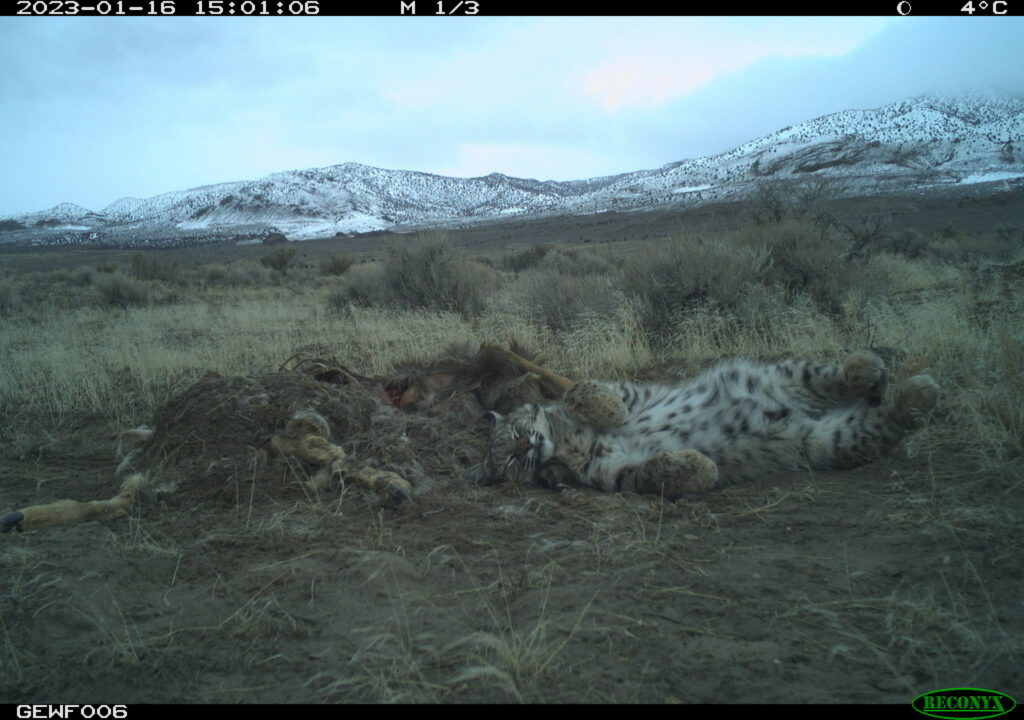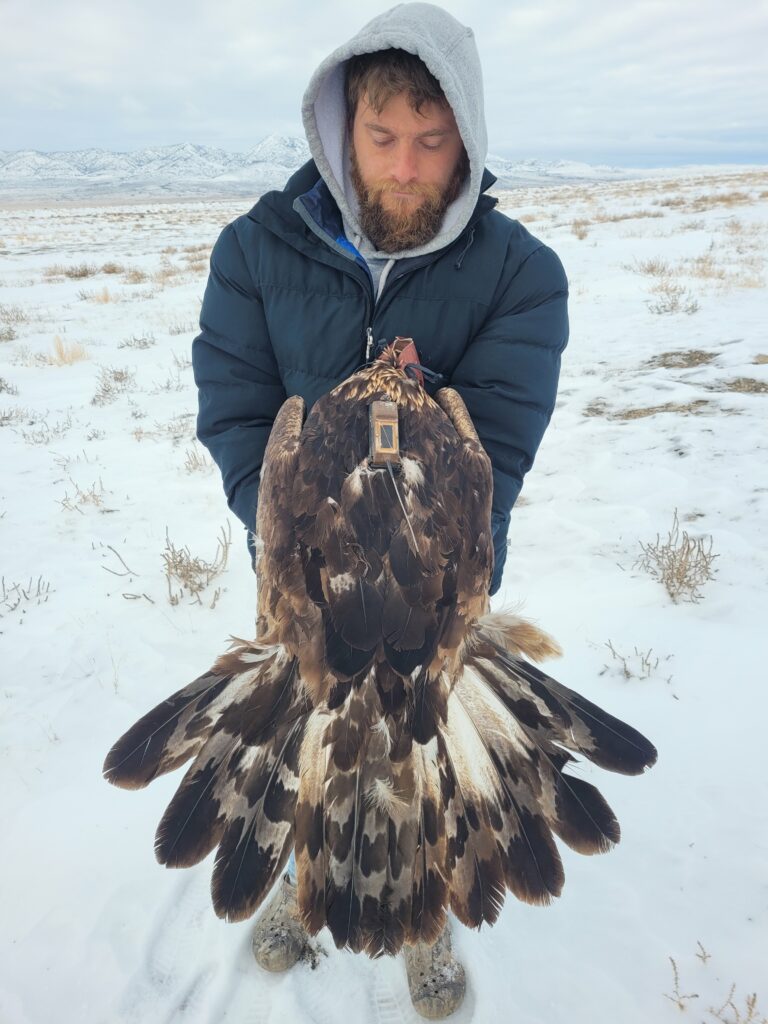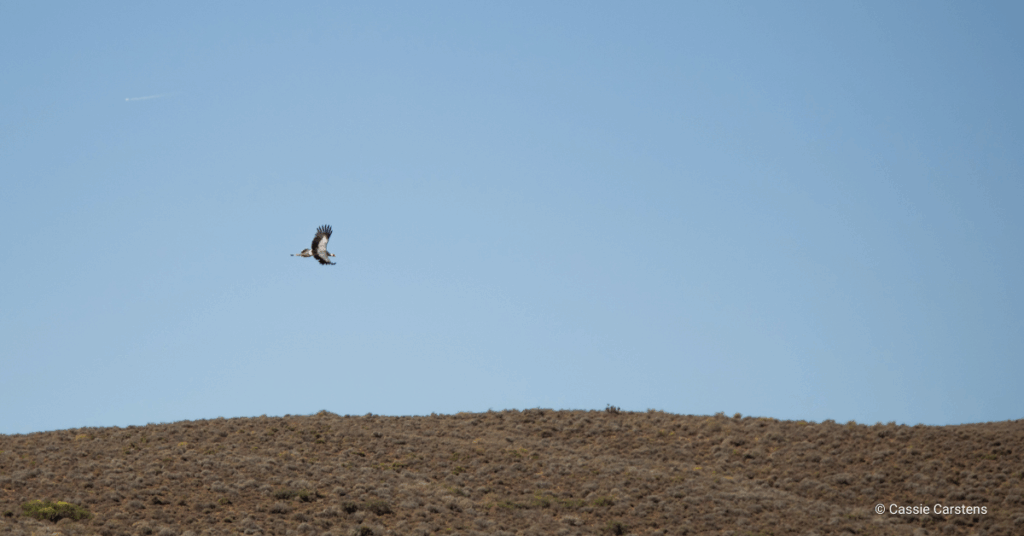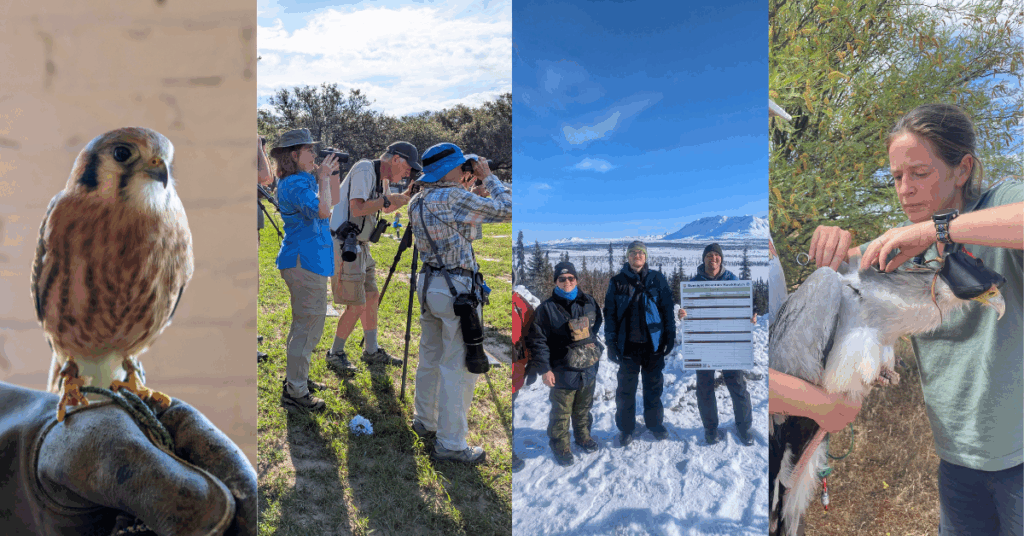With a backdrop of snow-covered peaks and the surrounding ruggedly beautiful West Desert, we made our way to the remote study sites for our Golden Eagle Winter Feeding program. As soon as the season started in December 2022, I knew we were in for a brutal winter. The winter season last year was brutal. The roads to the study sites were not for the faint of heart, with relentless snowfall making the backcountry roads feel like a never-ending slip n’ slide. Once we arrived at a site, we would bring the sled out and drag the previously collected carcasses to locations away from the roads—providing a safe food source for the eagles to feed on. Then, we would install motion-activated cameras, making sure they were set up correctly so that we could read any bands birds may have been carrying. We repeated this process for all 5 sites every couple of weeks.

Upon return visits to our study sites, it was always interesting to speculate on what had happened to a carcass. Of course, we have it all on camera, but those photos usually aren’t reviewed until we get back to the office (still, the itch to sneak a peek and pop the SD card in a camera is always there). I always got my hopes up on the drive to a site thinking that the carcass has probably been completely consumed by Golden Eagles and that we’re going to have so many photos to review, only to show up and either see it wasn’t touched that week or was completely devoured by a bobcat that camped out next to it for five days straight.


Trapping days are always tough. We usually have to drive over an hour to the study sites, get everything set up, and be clear of the site before dawn. Then, it becomes a waiting game. We either sit as still as possible, peering through a window-mounted scope in the cold truck all day, or we get lucky and catch an eagle—like the bird we trapped last year. First thing in the morning, the bird flew in, we trapped it, attached a backpack transmitter, took some photos, freed it, packed up the equipment, and were done by 9:30! We are trapping Golden Eagles during this study to learn more about their winter ecology during the harsh winter months. This bird is now carrying the color band “XX” and hoping to capture her on one of our camera traps this winter.
We are now gearing up for our second official field season of the program, and something I’m very excited about is the passive perch scales. These scales will let us determine the weights of Golden Eagles as they naturally perch in the wild. We worked with an engineer and did a bunch of testing last year to develop this technology, which utilizes a camera trap and solar-powered scale to measure the weights of eagles that land on the scale. Combined with the color bands we place on each bird, we are able to track the health of individual birds throughout the season(s). We had eight units built and deployed them in the West Desert this fall in anticipation of the field season. Also, we are excited about the generous donation of a pop-up camper that will be used as headquarters during eagle trapping.
This work would not be possible without funding from the JAKA Foundation and the Great Salt Lake Audubon, as well as our partners Dugway Proving Ground, Utah Division of Wildlife Resources, Hill Air Force, Ensign Ranches of Utah, Kriss Garcia, Kent Keller, and David Slater.
The Golden Eagle Winter Feeding Program is a conservation initiative aimed at supporting the local Utah West Desert population of Golden Eagles during the harsh winter months. Nest productivity and first-year survival of these birds have been at alarmingly low levels. Their main prey, jackrabbits, have shown a decrease in numbers due to habitat loss, degradation, and the introduction of the lethal Rabbit Hemorrhagic Disease (RHDV2) in 2021. We are looking at what benefits ungulate (e.g., deer and pronghorn) carrion relocation can have on Golden Eagles and aim to increase over-winter survival and nest productivity.
This blog was written by Cody Allen, HWI’s Field Biolgist You can learn more about Cody here.



